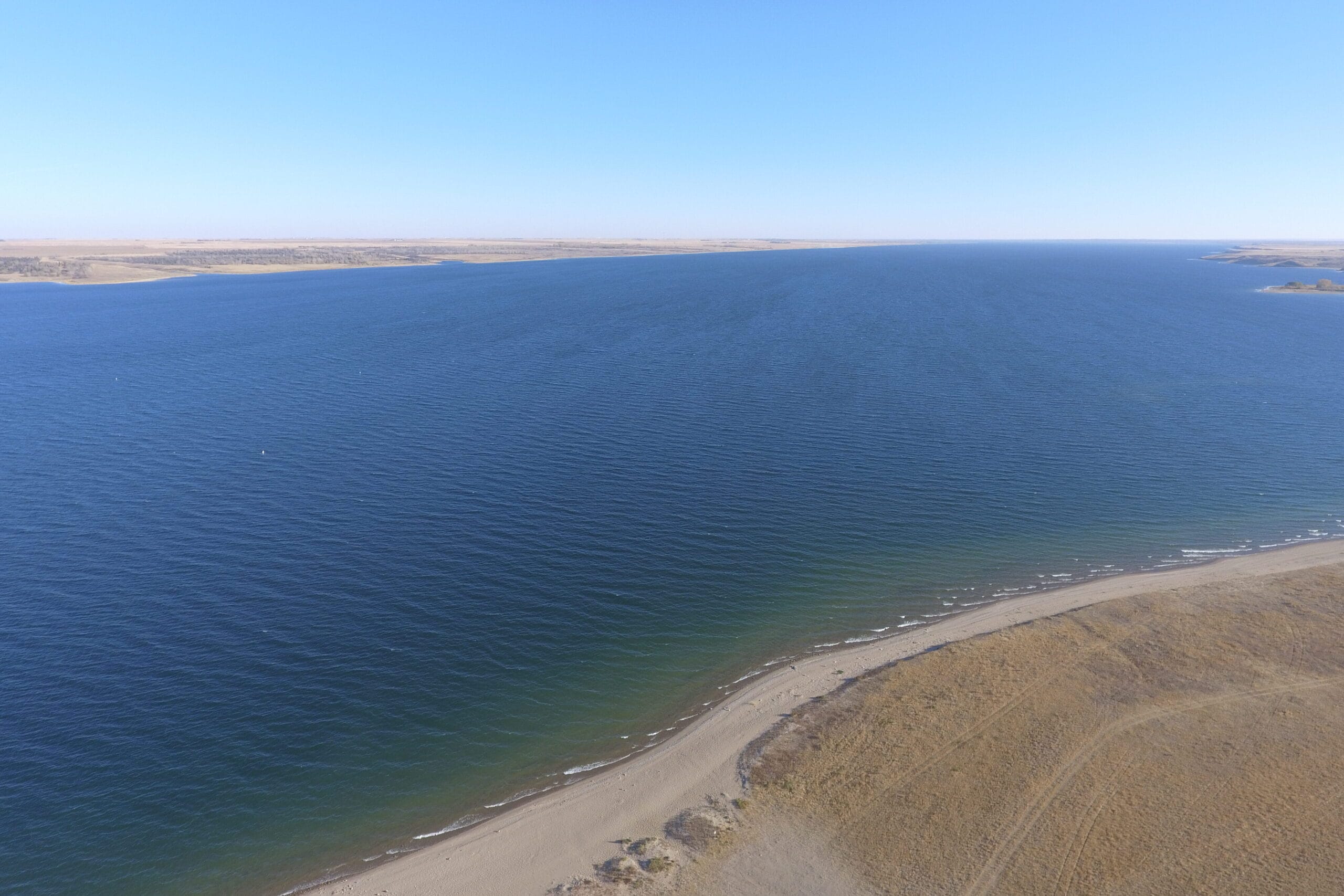Lake Diefenbaker has been an important part of the provincial fabric for residents in Saskatchewan for decades. Whether you know it or not, almost all of us are impacted by this reservoir. Supplying drinking water, generating hydroelectric power, fueling recreation and supporting agriculture, Lake Diefenbaker plays a vital role for us all. The Westside Irrigation Rehabilitation Project (WIRP) looks to further expand that role by adding 100,000 irrigated acres.
While the lake’s resume is impressive, concerns over the lake running out of water are understandable given the importance of the lake to over 60 per cent of the province’s population.
The Water Security Agency (WSA) analyzed 88 years of flow data to understand how much water is available to be used. They found that under normal operations, the lake has an annual water availability of nearly 900,000 acre-feet without interfering with municipal use, hydropower or recreational use.
Of that additional 900,000 acre-feet, the Westside Irrigation Rehabilitation Project is estimated to use 100,000 acre-feet of that water, meaning there is plenty of water available for this project and more.
In practical terms, the amount of water required for the Westside Irrigation Rehabilitation Project would be less than a foot of water from the lake.
Another way to measure how much water is available is through inflow (the amount of water flowing into the lake from rivers and other sources). Only about nine per cent of Lake Diefenbaker’s average annual inflow is currently used. The Westside Irrigation Rehabilitation Project is expected to raise that by approximately two per cent.
For context, natural evaporation alone accounts for three to four per cent of the lake’s annual inflow—meaning the increase in water use from the project is still lower than what nature takes on its own.

Where the Water Comes From
Understanding Lake Diefenbaker’s water sources helps put things into perspective.
Around 70 to 80 per cent of lake inflows originate in Alberta through snow melt and seasonal rainfall. Saskatchewan relies on natural cycles in Alberta, meaning that we are not solely dependent on local precipitation and run off. Instead, natural inflows from Alberta play a critical role in reservoir levels.
Moreover, many climate models predict increased water flows in the South Saskatchewan River system due to climate change. While water flow predictability may shift, experts expect higher overall volumes rather than shortages. But, there could be more prolonged periods of dry cycles, making the ability to capture and store water even more important.
A Multi-Use Reservoir Requires Balance
Lake Diefenbaker serves multiple roles, which means that water management is key to ensuring each sector gets the supply it needs.
For flood control, managers must sometimes lower lake levels to create space for excess water during high inflow seasons. Conversely, for municipal and agricultural use, levels must be kept high enough to ensure a stable supply throughout the year.
Each winter, the lake is drawn down for hydroelectric generation, typically reducing its elevation to approximately 551 metres above sea level. This allows space for prairie snowmelt, mountain runoff and rainfall to refill the lake in the coming spring, often raising it by more than four metres to normal levels for summer.
For recreation, boaters benefit from target elevation levels, ensuring harbors and access points remain functional. Although, some years when inflows are lower this can be impacted; but this speaks to needing that balance for all uses.

The Role of Water Agreements
Saskatchewan’s water usage isn’t just about internal management—it is also governed by the Prairie Provinces Water Board Master Agreement on Apportionment, a 1969 treaty ensuring Alberta, Saskatchewan and Manitoba share water equitably.
Under this agreement, each province must pass 50 per cent of volume by the year to its downstream neighbours. Alberta is also required to maintain a minimum flow of 42.5 cubic metres per second at the border, ensuring Saskatchewan gets its fair share before passing half of its own natural flows downstream to Manitoba.
In the event that there is a water shortage, the Water Security Agency has the Water Shortage Policy, which provides direction for water management decisions and actions.
Concerns about Lake Diefenbaker’s future are understandable, but the data overwhelmingly supports the province’s ability to expand irrigation without jeopardizing long-term water security.
While there will be enough water for the project, it is also about careful management of Lake Diefenbaker that will ensure long-term sustainability allowing irrigation to expand while ensuring the water availability in the lake remains for generations to come.
Saskatchewan has a unique opportunity to strengthen its agricultural economy while protecting the environment and meeting the needs of current users—by prioritizing sustainable water management, balancing flood control with municipal needs, and leveraging one of Canada’s largest water reserves.

